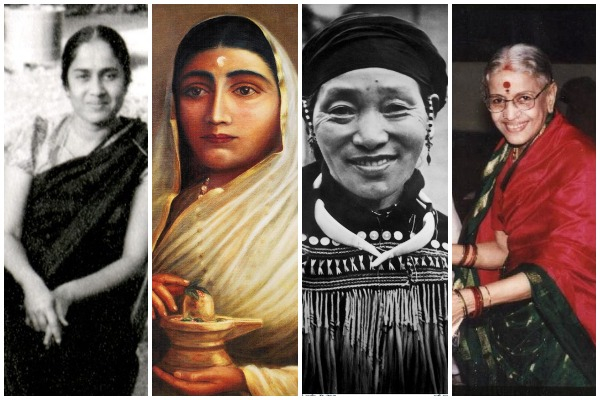
The Ten Women After Whom The Modi Government Is Planning To Set Up Chairs In Universities
by Swarajya StaffSnapshot
The move is being steered by the Ministry of Women and Child Development.
The 10 chosen women stand out in the Indian gender narrative as propellers of excellence and social change.
The Narendra Modi government is planning to set up chairs in the memory of 10 women luminaries from different fields in universities.
According to a report in the Deccan Herald, the move is being steered by the Ministry of Women and Child Development.
These women stand out in the Indian gender narrative as propellers of excellence, social change and movements, who also stood against the disadvantage of gender of their times.
“The University Grants Commission has invited universities to send in proposals for establishing the Chairs,” the report says.
The list of luminaries includes Lalleshwari, or Lal Ded, the Shaivism school mystic who is known for vakhs — her works which are important part of Kashmiri literature and continue to inspire people, literature and contemporary art.
There is the name of Devi Ahilya Bai Holkar, also known as Rajmata Ahilyabai, the strong ruler of Malwa. She is also known for being the true reflection of Indic values in the way she wove cultural integration among the dharmics, rejuvenated dharma, with a focus on governance, administration and trade.
(Read: Why We Must Cherish The Legacy Of Devi Ahilyabai Holkar)
Rajmata Ahilyabai took up works in different parts of India, building a legacy of structural contributions to dharmic life, among which are stately temples.
According to the report, WCD will provide “100 per cent funding for the establishment of the Chairs.”
The list also mentions Amrita Devi Beniwal, whose memory drives the Bishnoi community of Jodhpur in protecting the flora and fauna of the region.
The Bishnoi sentiment towards the environment goes back to 1730, when Amrita Devi, along with her daughters, gave her life to save trees from being felled — in a protest against the Maharaja of Jodhpur in Marwar, who was the force behind the felling of trees.
Read: How Women Of A Jodhpur Village Propel The Bishnoi Sentiment For Ecology And Life)
It is believed that Uttarakhand's ‘Chipko Andolan’ was a modern reminder of Bishnoi resistance. It took place two centuries after the horrific killings in Khejarli village where Amrita Devi sacrificed her life.
Among other luminaries are Carnatic vocalist M S Subbulakshmi, Indian biochemist Kamala Sohonie, who was also the first Indian woman to receive a Ph.D in a scientific discipline and opened the path for women to achieve excellence at the Indian Institute of Science (IISc), Bengaluru.
The list also includes Lilavati — a mathematician who was the daughter of the 12th century legendary mathematician Bhaskaracharya — also known as Bhaskara II, Anandibai Gopalrao Joshi, India’s first woman physician, and Hansa Mehta, noted writer and luminary from Gujarat.
Naga spiritual and political leader Rani Gaidinliu, who fought against the British and provided an impetus to Naga values and religious practices will also be paid a tribute through a chair in her name.
The move is significant as it rejuvenates the strong gender voices from India's past in the current political and contemporary academic set up, those working for women empowerment said.
The effort to choose some of the most outstanding women achievers from India's cultural and political historical landscape, commentators said, also displays a pan-India approach by the ministry headed by Smriti Irani.